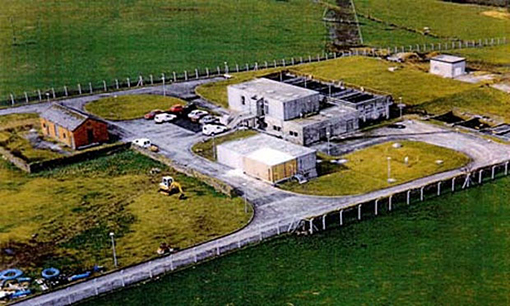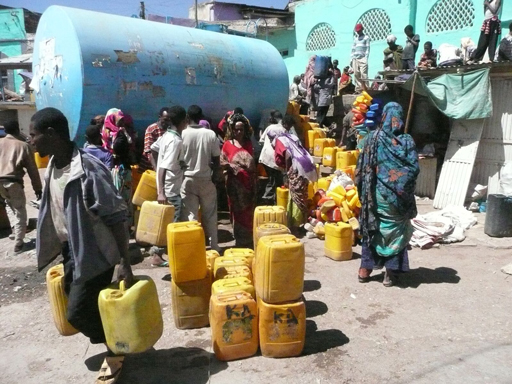14.1.4 Events caused by human intervention
It is possible that a deliberate attempt could be made to poison a water supply as an act of terrorism, but it is far more likely that human causes of water emergencies will be due to accident and neglect. There can be instances where the water supplied will be unfit for human consumption as a result of an accident – Box 14.1 describes such a case at a water treatment works in the United Kingdom.
Box 14.1 An example of a human-caused water emergency in the UK
In July 1988 in Camelford, a small town of 20,000 people in south-west England, 20 tonnes of aluminium sulphate was dumped into the wrong tank at the local water treatment plant (Figure 14.3) by a chemical tanker driver who was not familiar with the plant layout and delivery procedures.Aluminium sulphate went directly into the mains water supply, and this became the worst water poisoning incident in Britain. Residents complained because the water coming out of the tap was black, and curdled the milk in their tea. One man described how his hair had stuck together after he took a bath, as if his head had been smeared with glue. Symptoms such as stomach cramp, diarrhoea, skin rashes, joint pain, sore throat, short-term memory problems and general exhaustion were reported.

Aside from accidents, human neglect is the other most likely cause of a water emergency. Case Study 14.1 illustrates how neglect can lead to a water crisis, although it does not fit the definition of an emergency because it was not sudden.
Case Study 14.1 Water supply in Harar
Harar is a city in the eastern part of Ethiopia, 505 km from Addis Ababa. The city used to get water from Lake Alemaya (Haromaya), but since February 2004 the supply has ceased.
The water treatment plant at the lake was originally designed to serve a population of 70,000 but in 2000 the plant was supplying 160,000 people, who lived in Harar City, two small towns and at Haramaya University.
Lake Alemaya (Figure 14.4) has at its edge the town of Alemaya to the south and southwest, Haramaya University to the east, and farming communities to the north and northwest. In the mid-1980s its maximum depth was around 8 m and it covered an area of 4.72 km2. It was an attractive freshwater lake used for drinking water, irrigation, fishery and recreation. Farmers in the surrounding community used a tremendous amount of fertiliser to grow different crops, in addition to khat, and excess fertiliser used to end up in the lake. Wastes containing chemicals from the town were dumped at the shore of the lake in indiscriminate and irresponsible ways.

The depletion of water from the lake started slowly and no protective conservation measures were taken by anyone, although it was plain that the water level was dropping year on year.
After the water had nearly gone, the city faced a serious water shortage and water rationing was introduced. Responding to the acute water shortage in Harar, many individuals in central government and non-governmental organisations were involved in a programme to combat the emergency. Water tankers were used to transport water to the town dwellers from distant available sources (Figure 14.5). This emergency operation continued for more than a year until deep wells were dug 20 km away to supply water to the residents again.

14.1.3 Earthquake
